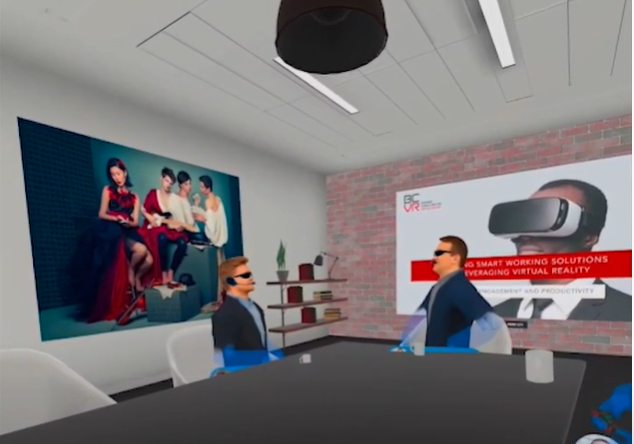Have you ever struggled to find a holiday destination that keeps the whole family happy? Think about Virtual Reality.
Wouldn’t it be great to check the suitability of each location beforehand? Well, using Visualise Virtual Reality (VR) technology, Thomas Cook customers can now visit a range of locations before they book. This is just one way that VR is being used in the professional world.
Of course, using Virtual Reality as a professional tool is nothing new. Indeed, pilots have been using flight simulators for many years, but we will see Virtual Reality (VR) and Augmented Reality (AR) used in more professional environments over the next few years.
According to findcourses.co.uk’s 2022 L&D Benchmarking Survey, 75% of employers will implement more technology-based learning this year. However, VR/AR technology only accounts for 14% of their investment, showing that when it comes to new technology, we are still cautious. But should we be?
With such technology at our fingertips, the possibilities are endless. It is not exclusive to high-stakes professions like medicine or engineering either; in fact, LinkedIn predicts that Virtual Reality Is The Future Of Onboarding, meaning this technology may even be coming to your office. So, is it time to forget caution and embrace a virtual world of possibility?

Virtual Reality and Augmented Reality Explained.
Simply put, VR is a fully immersive technological experience, such as a flight simulator, whereas AR adds digital elements to a live view and can be accessed on a smartphone. You may already be familiar with augmented reality if you use Snapchat filters, Pokemon Go or Street View on Google Maps.
While most of us probably associate AR with social media gimmicks, imagine a surgeon receiving augmented guidance as they conduct a high-pressure procedure.
With estimations saying the UK will experience a 78.3% growth rate for spending on AR and VR before 2024, you will likely encounter it before long.
Therefore, it is time that your company considers VR/AR training an important part of HR Training.
Ways that VR and AR can benefit different organizations
These are just some of the ways that organizations are adopting VR and AR:
Professional training.
Many people learn faster by doing, and VR allows companies to create a safe space for employee training. In high-risk environments like industry, construction, or engineering, employees can receive on-the-job training without risk of injury.
Practising emergency drills.
Brandon Wilkes of The Big Phone Store UK explains that AR “enables businesses to assess the stress and performance of their workforce” during an emergency situation. He says that “the entire procedure is cost-effective and customizable [and] to take part in the drill, employees do not require any specific training or protective equipment.”
Educational visits on Virtual Reality.
Connor Ondriska at SpanishVIP says that “some of the most common ways in which these technologies are used in education include teaching science to kids, conducting tours of historical sites, and creating virtual museums”.
It is clear that hybrid and remote work is here to stay and that technology will play a more prominent role in the future. Of course, finding the right balance is key, so organizations should look for VR and AR opportunities, such as using VR situations as part of onboarding or management training and hosting virtual events.
Author Bio
Elaine Thatcher is a Digital Content Writer at findcourses.co.uk. She brings extensive knowledge from an 18-year career as an educator in British and International schools, and she believes that learning is a lifelong goal. Originally from the UK, Elaine has lived in major Asian and European cities and currently resides in Sweden.